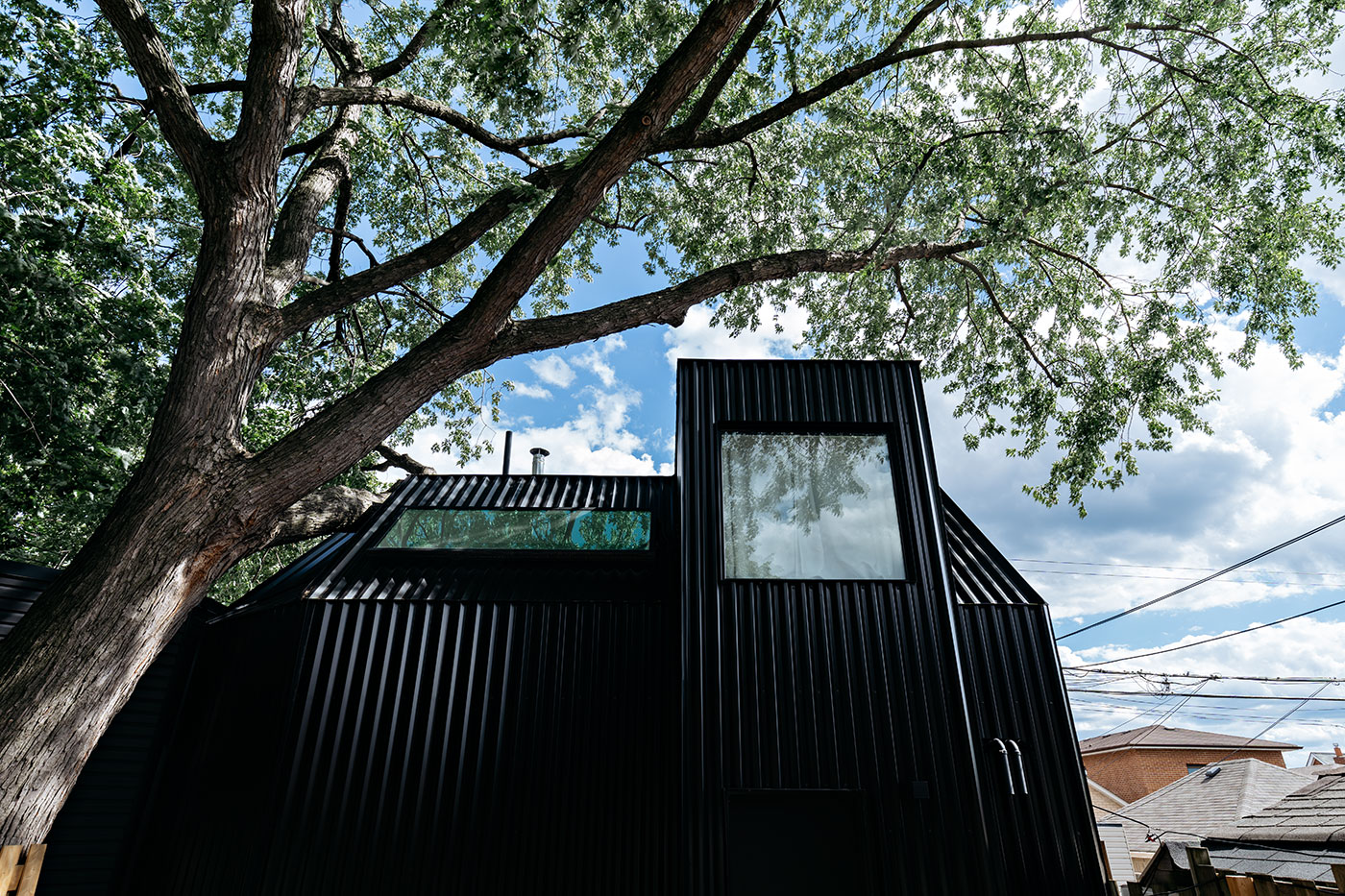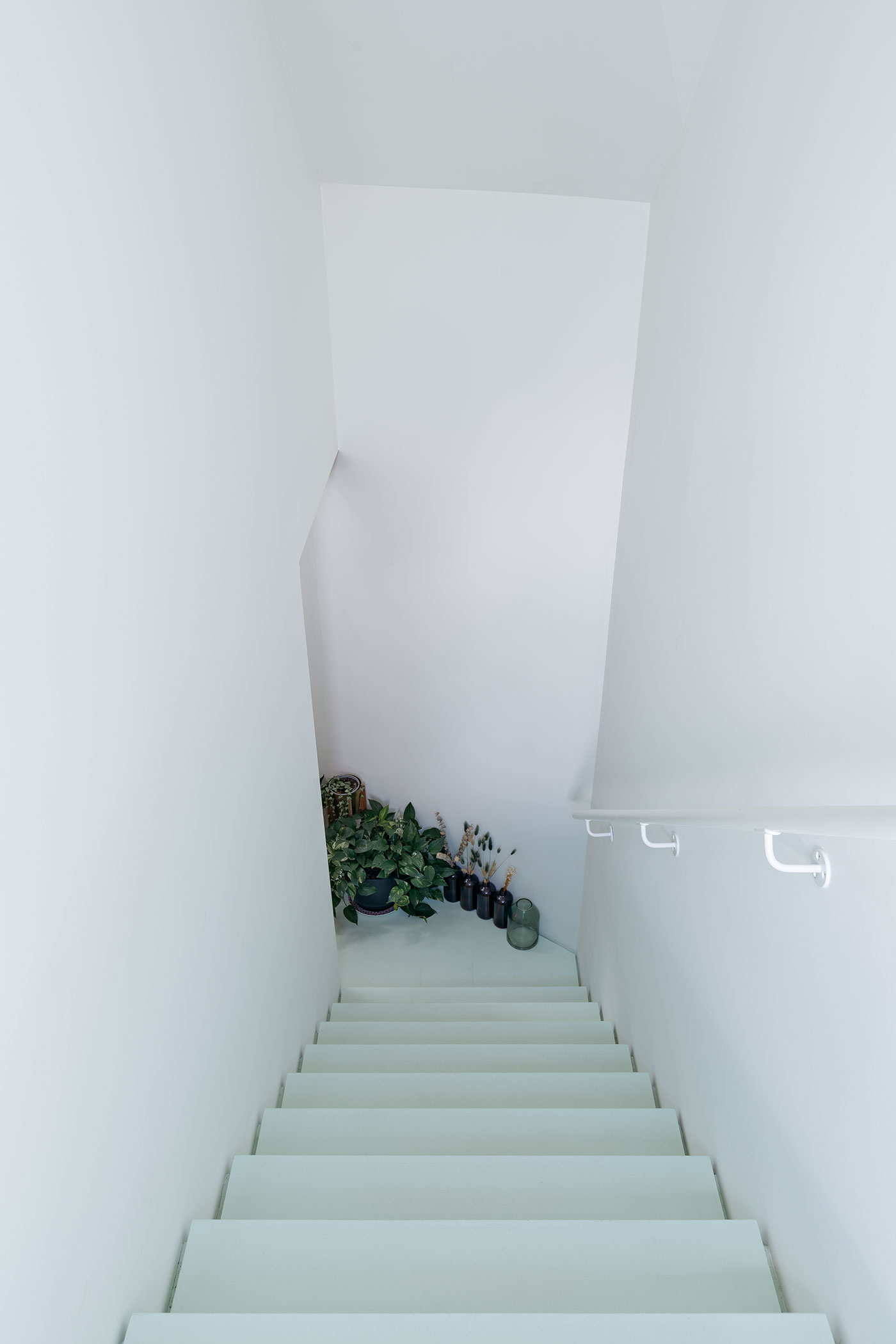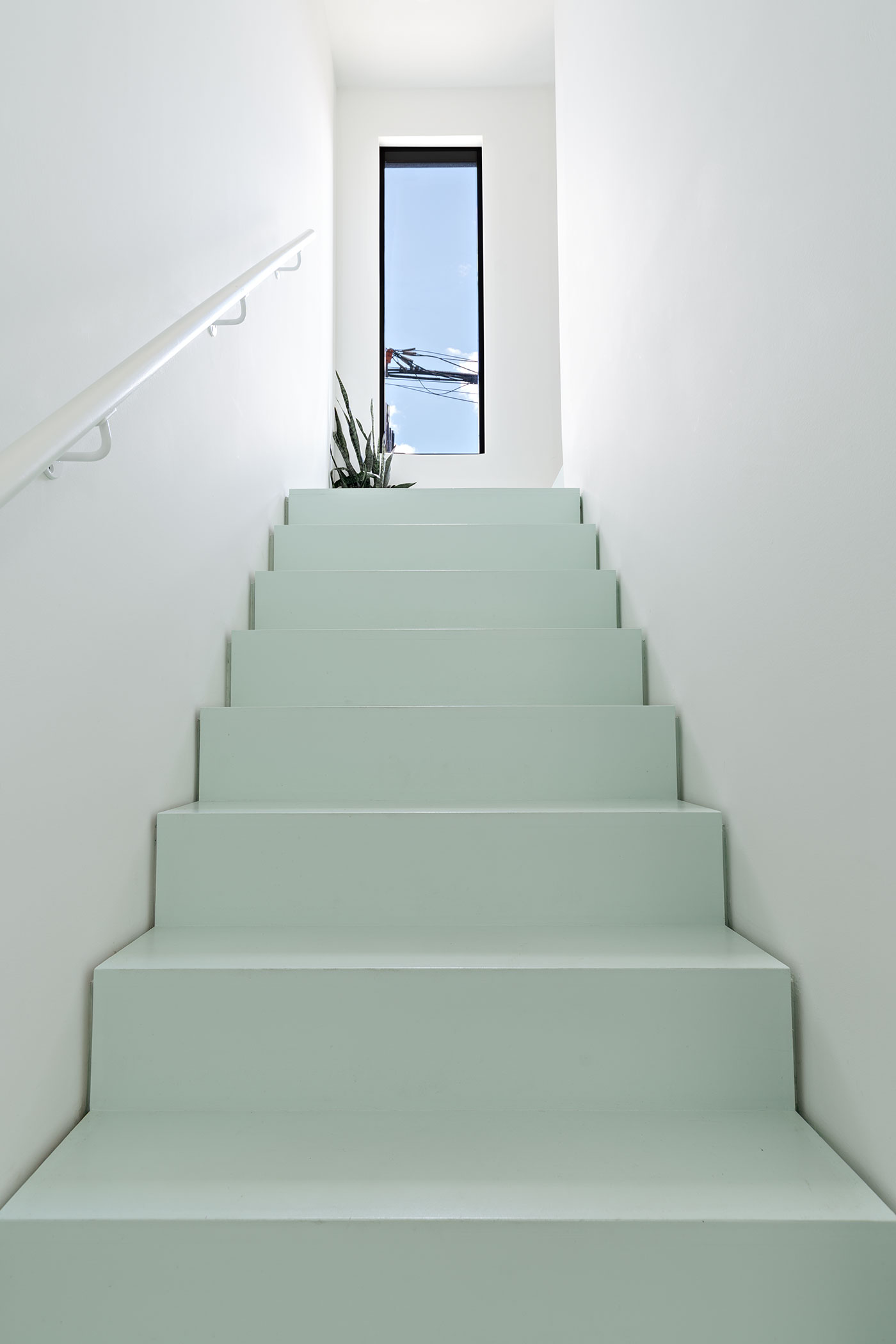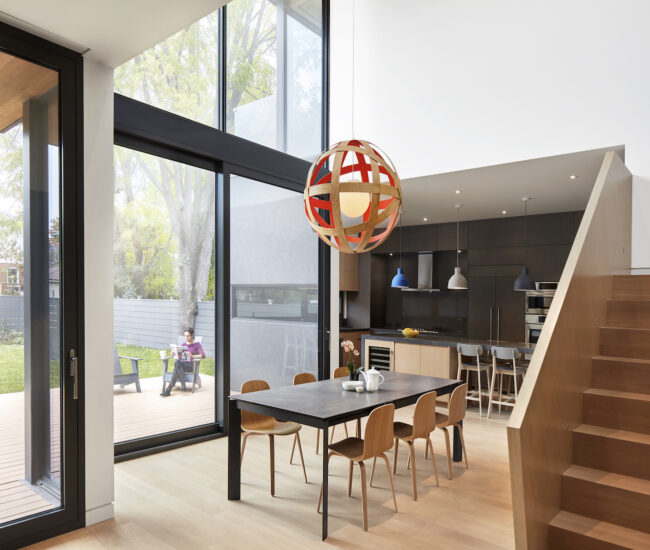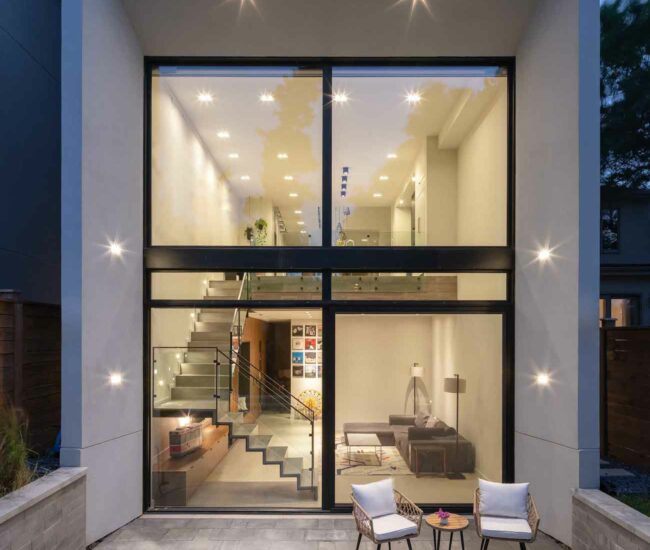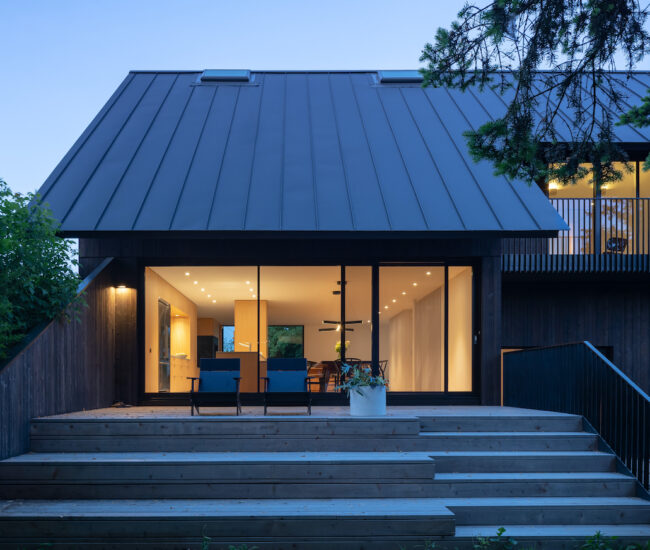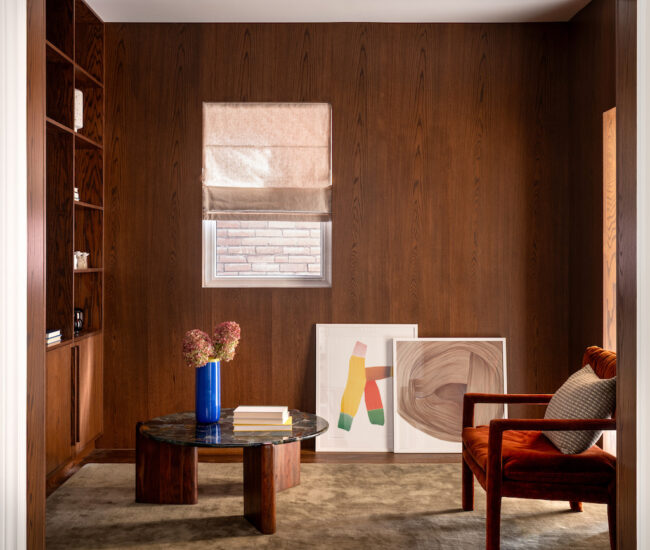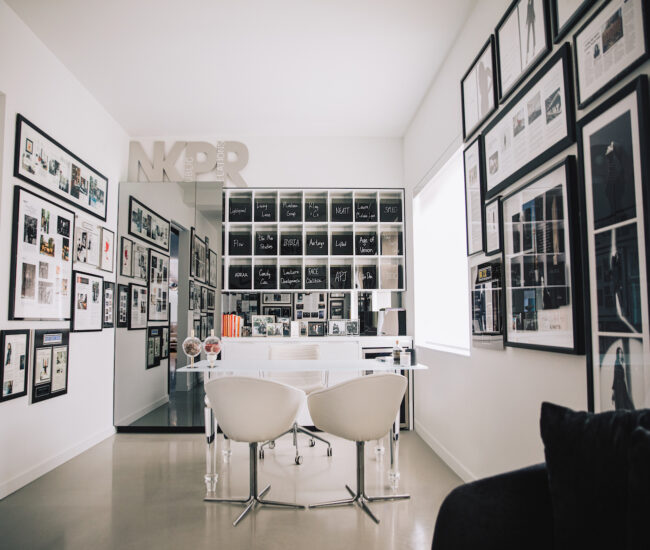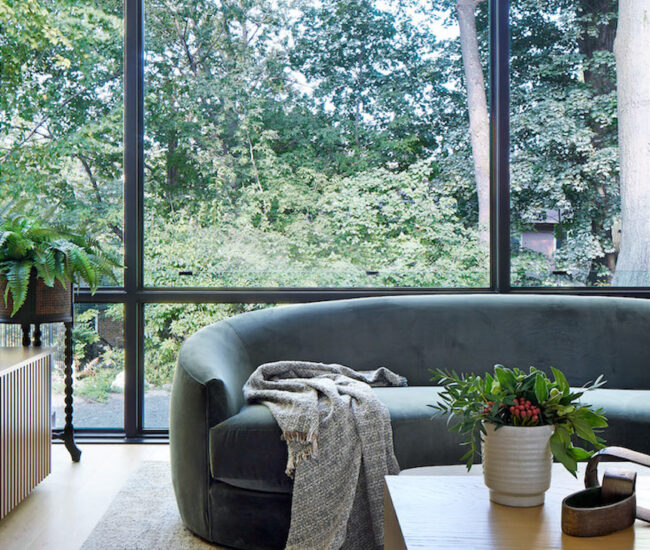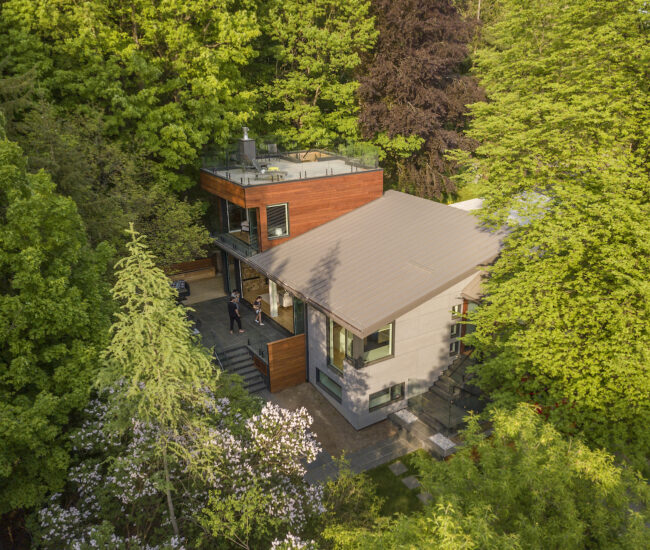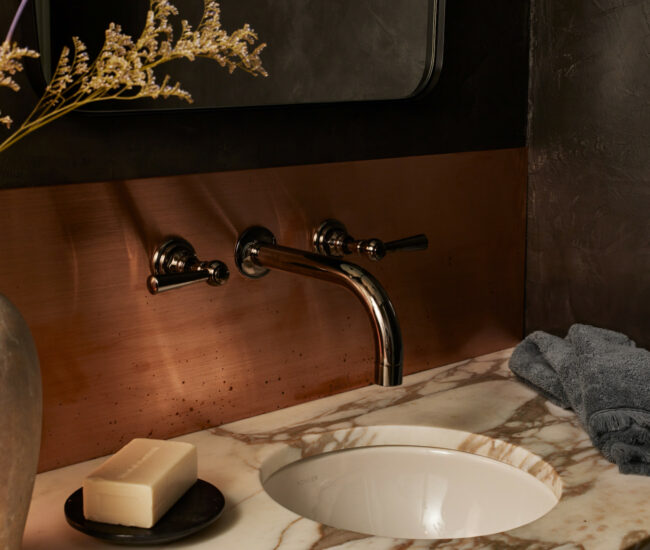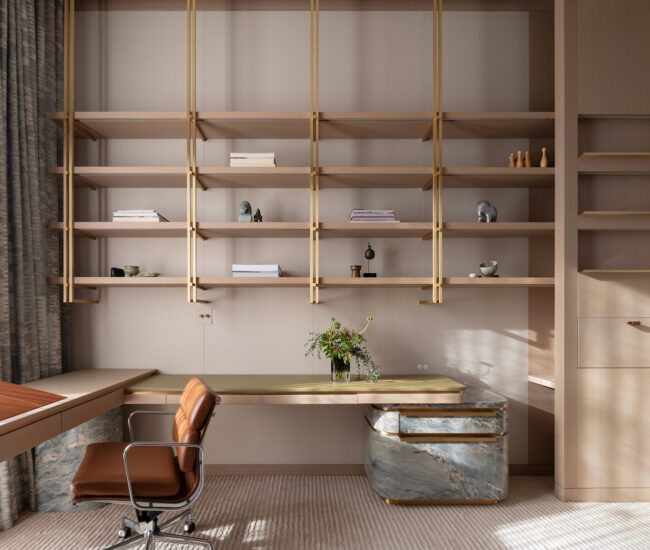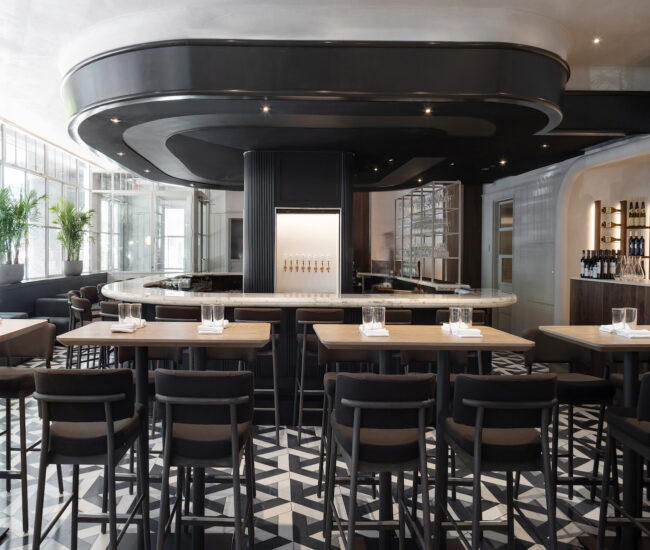Built to Last
Two architecturally minded pals, real estate developer Brandon Donnelly and architect Gabriel Fain, build a spectacular laneway house 11 years in the making
Tucked in the back like a cool bar sans signage, laneway houses are somewhat romantic and mysterious. Brandon Donnelly and Gabriel Fain certainly think so. They’ve been smitten with the structures since their days studying architecture at the University of Toronto, where they met in the mid aughts. Eventually, Donnelly, the real estate developer behind Globizen Studio, and Fain, an architect with his own firm, got around to building one (with Kilbarry Hill Construction) in Donnelly’s backyard. An 11-year pursuit put on hiatus by red tape, the 850-square-foot laneway house in Corso Italia has one bedroom plus a study. It was worth the wait. With its chic black exterior and shipshape white interior – accessed through a soft mint-green door – it’s an inspiring upgrade to the empty, unused land that was there before. Here’s how it came together, despite a neighbouring tree whose roots were having none of it.

Designlines: Why such a long delay?
Brandon Donnelly: In 2011, Gabriel and I did some drawings. We inquired at the [City] to get a feel for the feasibility of something like this. The [person] at the counter had no idea what was being proposed. A house behind a house: what do you mean? The general view was that it would be next to impossible to build a laneway house at that time. So we didn’t submit anything.
DL: What’s the fascination with the laneway?
Gabriel Fain: We’re trying to make the city the way we want to live in it. That was our philosophy all the way back in architecture school: how to make cities more walkable and engaging and neighbourhoods more close-knit.

DL: Laneway houses definitely have that charm, and they bring much-needed housing.
Brandon Donnelly: Absolutely, it’s increasing overall supply. And it’s
converting space historically reserved to park cars.

DL: So, when did you finally get the go-ahead to build?
Brandon Donnelly: In 2017, we went to the Committee of Adjustment to get the minor variances required, and we were turned down. The policies weren’t in place yet for laneway suites. We waited, and then it was relatively straightforward. We did have special permission with respect to a 100-year-old tree that was straddling the property.
Gabriel Fain: The whole laneway house is sitting on a steel frame with steel posts embedded into the earth. The posts don’t touch a single root on the adjacent tree [a big workaround for the project]. Above that is standard wood construction. You see the exposed wood in the ceiling on the main floor. It reduces drywall and expresses the way it was built. The exterior is clad in corrugated metal – it’s highly durable. In 100 years, it can be stripped off and reused, [so it’s] sustainable. There’s also a Scavolini kitchen.

DL: What other sustainable elements did you consider?
Gabriel Fain: A key part of construction was minimizing the use of concrete, which I’m a huge advocate of. A lot of the time when people say buildings are sustainable, they’re building
the same way; they’re just adding bells and whistles to make them so-called sustainable buildings. I have a lot of issues with that. It’s a philosophical way of building, which is using materials that are less energy-intensive, which is
a sustainable practice. We don’t have slab on grade or concrete foundations, so that’s a huge sustainability agenda for me.
Brandon Donnelly: The fact that we are infilling into existing neighbourhoods and creating new housing – and not building parking for this laneway suite – is also a [sustainable] move. People can bike and use other modes of transport.
Gabriel Fain: We talk about transit-oriented development on larger projects. It’s a way of thinking about sustainability that’s more to the root of what it is, rather than putting up solar panels. Sustainability is lifestyle.

DL: Is that what you meant by bells and whistles?
Gabriel Fain: Solar panels and toilets that flush a certain way. All these add-ons are fine. They meet the targets of different LEED requirements. You fill a bunch of checkboxes: does
it have bike parking space? There’s not a lot of energy use in this building because it’s so small and compact, so it’s not that energy-intensive in terms of its functions.
DL: Tell me more about the design moves.
Gabriel Fain: The black exterior has a kind of robustness. It has strength. And on the interior, it’s about lightness and
airiness. A skylight lets in tons of light on the main floor,
and a mint-green element comes in through the stair and the door. It creates this fun aspect, especially when you’re walking up the stairs. There’s a window at the top that frames the view of the sky. There are these calibrated moments with the materials and the colours and the shape of the building – even with such a small site, we tried to make every move meaningful. GABRIELFAIN.COM, GLOBIZEN.COM


